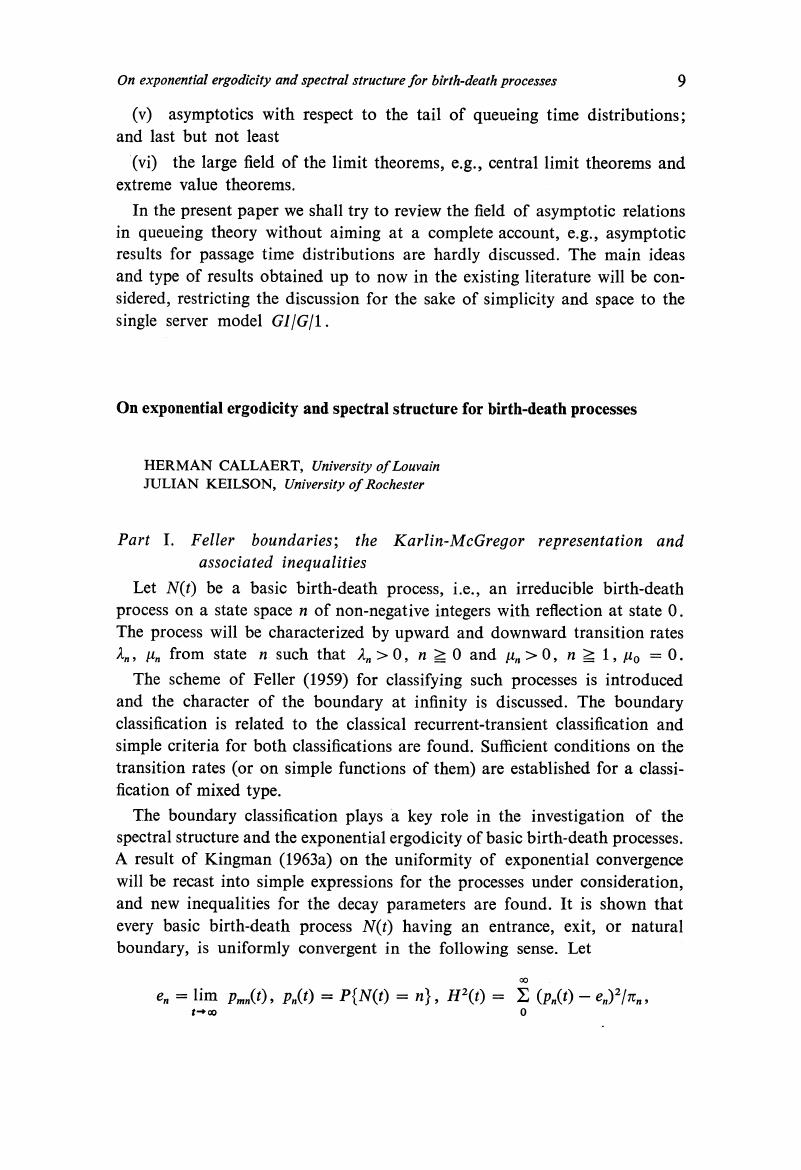No CrossRef data available.
Article contents
On exponential ergodicity and spectral structure for birth-death processes
Published online by Cambridge University Press: 01 July 2016
Abstract
An abstract is not available for this content so a preview has been provided. Please use the Get access link above for information on how to access this content.

- Type
- Second conference on stochastic processes and applications
- Information
- Copyright
- Copyright © Applied Probability Trust 1973
References
Feller, W. (1959) The birth-and-death processes as diffusion processes. J. Math. Pures Appl.
38, 301–345.Google Scholar
Karlin, S. and McGregor, J. L. (1957a) The differential equations of birth-and-death processes, and the Stieltjes moment problem. Trans. Amer. Math. Soc.
85, 489–546.CrossRefGoogle Scholar
Karlin, S. and McGregor, J. L. (1957b) The classification of birth-and-death processes. Trans. Amer. Math. Soc.
86, 366–400.Google Scholar
Keilson, J. (1965) A review of transient behavior in regular diffusion and birth-death processes. Part II. J. Appl. Prob.
2, 405–428.Google Scholar
Keilson, J. (1971) Log-concavity and log-convexity in passage time densities of diffusion and birth-death processes. J. Appl Prob.
8, 391–398.Google Scholar
Kendall, D. G. (1959a) Unitary dilations of Markov transition operators and the corresponding integral representations for transition-probability matrices. In Probability and Statistics. Ed. Grenander, U.. Almqvist and Wiksell, Stockholm.Google Scholar
Kingman, J. F. C. (1963a) The exponential decay of Markov transition probabilities. Proc. Lond. Math. Soc. (3) 13, 337–358.Google Scholar
Kingman, J. F. C. (1963b) Ergodic properties of continuous-time Markov processes and their discrete skeletons. Proc. Lond. Math. Soc. (3) 13, 593–604.Google Scholar


